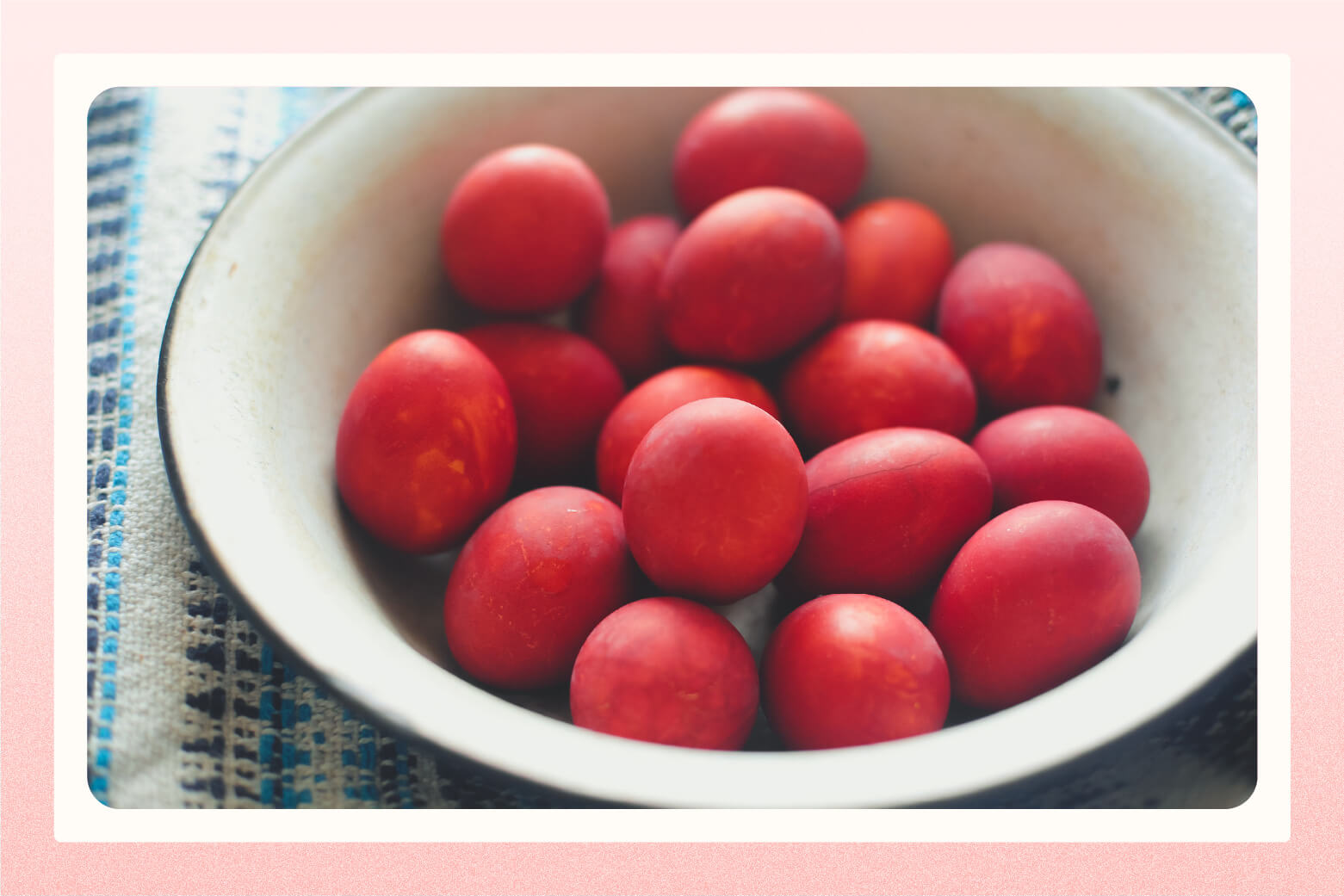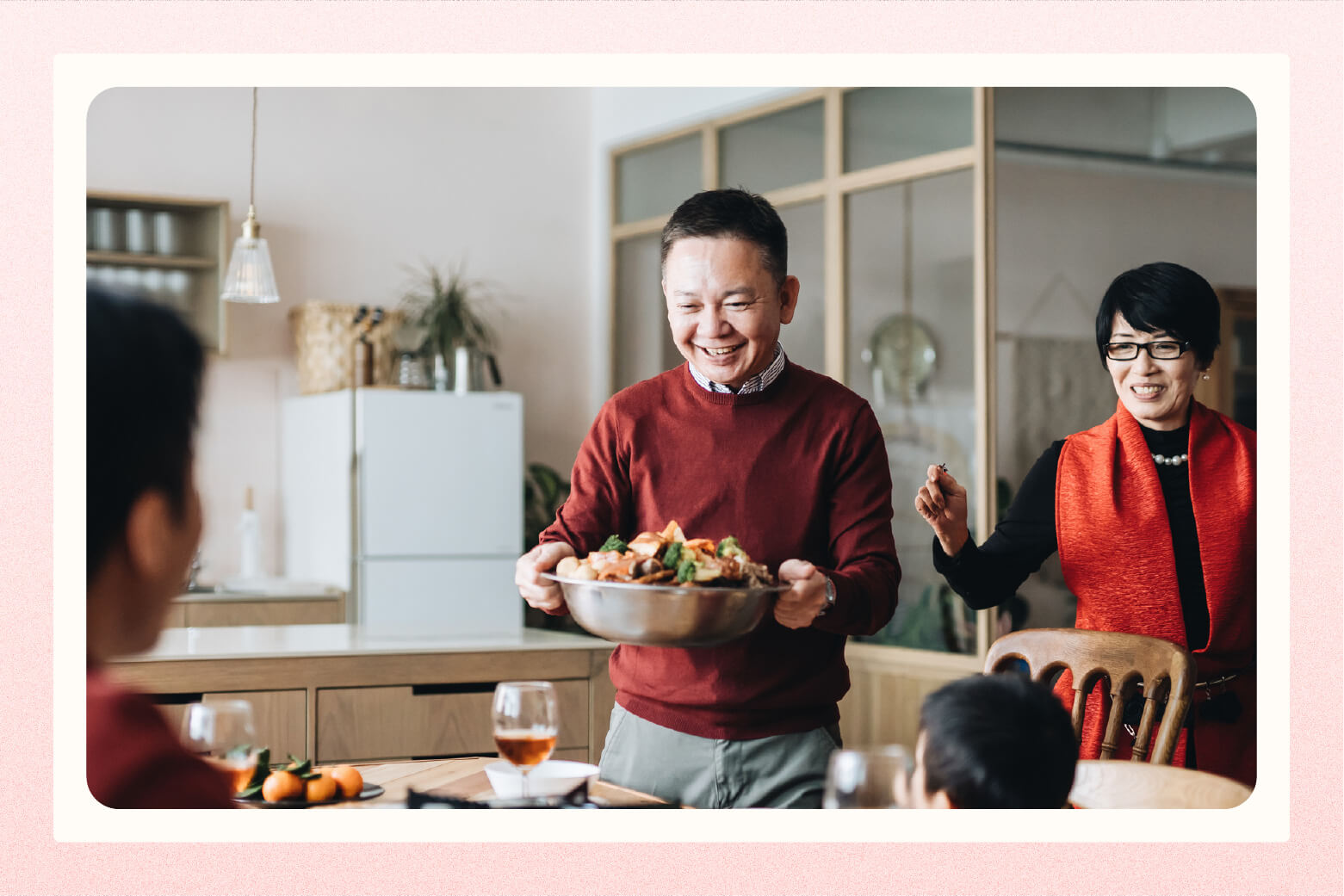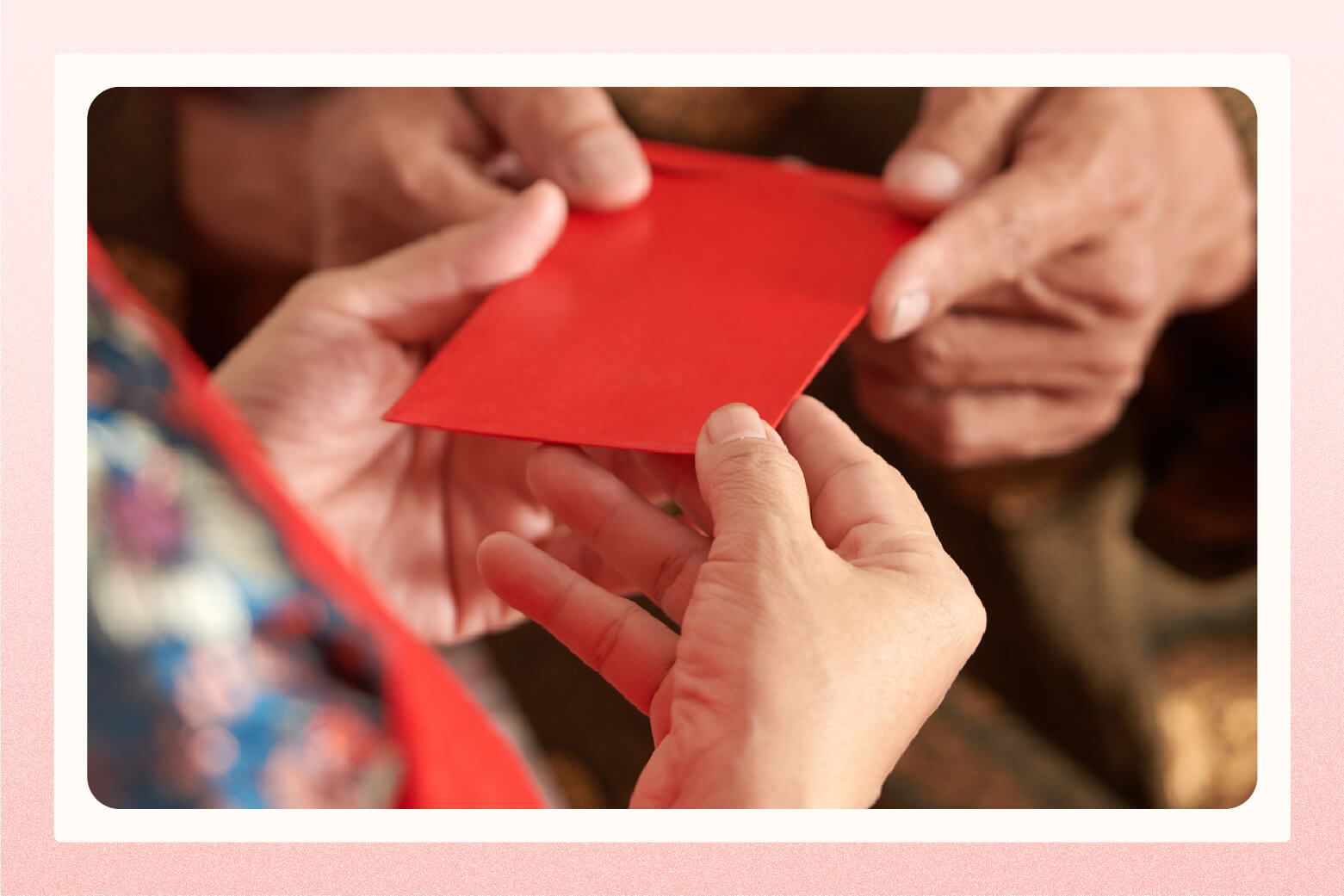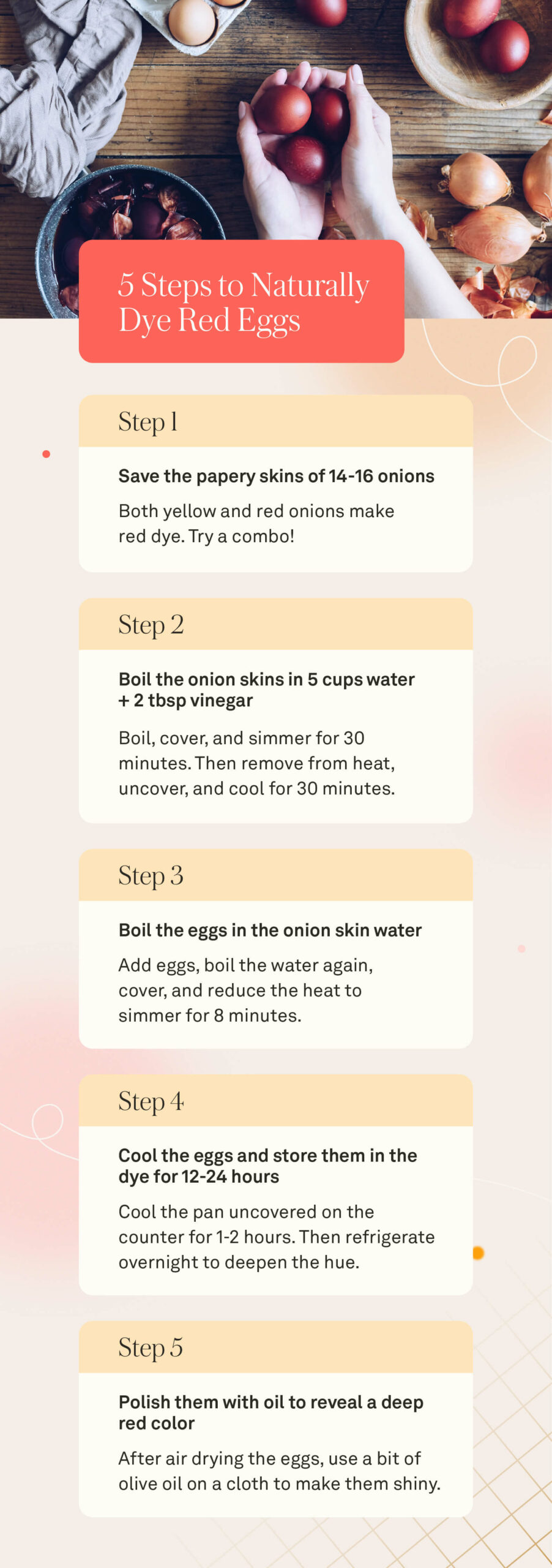A red egg and ginger party is a tradition celebrated 30 days after a baby is born. It is deeply rooted in Chinese culture and symbolizes the arrival of a newborn and the baby’s introduction to family and friends. This celebration is also meaningful across some Vietnamese, Taiwanese, and Korean communities. It’s a fun and festive event that helps strengthen family bonds and honor traditions.
In this post, we’ll explain the symbolism involved in a red egg and ginger party and share tips for planning the perfect event. We’ve even included step-by-step instructions for achieving perfect red eggs.
What Do Red Eggs and Ginger Symbolize?

Red eggs are believed to represent happiness, healthy fertility, and prosperity in some Asian cultures. Once a child is born, hard-boiled eggs are dyed a deep red color and the baby’s parents give them to friends and family as a gesture of well wishes and good fortune. Traditionally, an even number of eggs are presented for baby boys and an odd number of eggs for girls.
Ginger is known for its energizing and healing properties for new mothers. It is also believed to ward off evil spirits. During a red egg party, ginger is incorporated into various dishes and served up pickled for guests to enjoy. It signifies the desire to protect the newborn from negative influences.
When Is the Right Time for a Red Egg Party?
Traditionally, a red egg party is held at the one-month mark because it represents the baby’s survival through the most vulnerable stage of infancy. Some families choose to focus on the milestone of the child’s 30th day, 100th day, or their first birthday. The specificity of the timing is a historical holdover from when infant mortality rates were much higher.
The exact date may depend more on factors like family preferences and cultural beliefs. Because the choice of date can carry cultural and superstitious significance, it may be worth consulting with elders or following specific cultural practices when determining when to hold a red egg and ginger party.
Where Should It Be?
The most common locations for red egg parties depend on the size of your guest list. Small, intimate gatherings of family and close friends are usually held in the home of the baby’s family. Larger events for a crowd may mean renting out a banquet hall or local restaurant for the festivities.
Red Egg Party Etiquette

Have fun exploring the customs and traditions of a red egg party! Here are a few ideas to help you plan the big day.
What invites and decorations should look like
When designing your red egg and ginger invitations, try incorporating vibrant red and auspicious gold colors, which are traditional in many Asian cultures.
Red is considered lucky and symbolizes happiness, while gold brings good fortune and wealth. You might also include meaningful symbols like dragons, tigers, or monkeys, depending on the Chinese zodiac sign your child is born under.
You may want to tie the decorations to the colors and themes used in your invitations. Also, you may want to think about the significance of red eggs and ginger to make them central themes at your event.
What food to serve
Beyond the bowls of red eggs and pickled ginger, traditional Chinese dishes like dumplings, noodles, and spring rolls are popular menu choices, symbolizing good luck, longevity, and new beginnings. Ginger-infused dishes and drinks are also a great way to incorporate the party’s theme.
A whole roast pig is commonly found on wedding menus and at most joyful celebrations like a red egg party. It is believed to represent the family’s prosperity. If purchasing an entire pig doesn’t fit in your budget (or your kitchen!), you could choose to serve roast pork loin or pork cracklins as a nod to tradition.
What to wear
When finding the right outfit for the baby, parents, and guests, colors like red and gold are a good option. If you prefer traditional women’s clothing, a stylish qipao or cheongsam adorned with intricate embroidery can be a beautiful choice. Consider a well-tailored suit or traditional Chinese attire like a changshan if traditional men’s clothes are more your style.
Choosing the right attire for a red egg and ginger party is a thoughtful way to show respect for this meaningful tradition while celebrating with friends and family. It’s essential to embrace cultural appreciation rather than appropriation, so avoid costume elements that might unintentionally perpetuate stereotypes.
Red Egg Party Gift Ideas

At a red egg and ginger party, gift-giving is actually part of a meaningful tradition. In contrast to a traditional baby shower gift idea, when selecting a gift for this special occasion, consider embracing the symbolism of red. You might present the family with a red envelope or hongbao containing a monetary gift, symbolizing good luck and prosperity for the baby. Other practical yet thoughtful presents for the occasion include:
- Baby clothing in vibrant red shades
- Baby care essentials
- Keepsake photo frame
- Personalized baby blanket
How to Dye Eggs Red

Taking the time to create vibrant red eggs is a fun — and slightly messy — part of the tradition. To achieve the perfect red eggs, you could use store-bought food dyes or natural products like onions, beetroots, and cabbage. Follow these easy steps to make your own!
Natural Onion Skin Method
- Collect the onion skins: For one dozen eggs, you will need the papery outer skin from 14-16 onions. Both yellow and red onion skins will produce a red dye.
- Boil the onion skins: Add your skins to 5 cups of water mixed with 2 tablespoons of vinegar. Bring it to a boil, cover, and reduce the heat to simmer for 30 minutes. Then remove from heat, uncover, and cool for 30 minutes.
- Boil the eggs: Gently immerse room-temperature eggs in a single layer in the dye. Add 1 cup of cold water if the eggs aren’t fully submerged. Bring the dyed water back to a boil, cover, and reduce the heat to simmer for eight minutes.
- Cool down overnight: Remove the pan from the heat and allow to cool, uncovered, for one to two hours. Place the pot in the refrigerator overnight to deepen the red hue.
- Polish them up: Use a slotted spoon to remove the eggs from the dye. Let them air dry on a plate or rack. Then lightly polish with a bit of olive oil on a cloth to reveal the deep red color.
Artificial Food Coloring Method
- Boil the eggs: Add your eggs to a pot of boiling water. Boil for 10 minutes.
- Cool the eggs: Immediately move the boiled eggs into a large bowl of ice water. Leave submerged for two to three minutes to halt the cooking.
- Transfer the eggs: Move your eggs to a bowl of hot water mixed with 1 teaspoon of vinegar.
- Add food coloring: Add drops of your chosen food dye to the water. The more drops you add, the deeper the color. Use a spoon to move the eggs and make sure they’re fully covered. (Reminder: Artificial food coloring can stain hands, clothes, and surfaces.)
- Air dry the eggs: Remove the eggs from the water and let them air dry on a rack for 30 minutes.
Whether you’re part of this time-honored tradition or are discovering it for the first time, red egg and ginger parties are a beautiful way to mark the beginning of a new chapter filled with love, blessings, and red eggs.
Frequently Asked Questions
How much money should I give for a red egg and ginger party?
It’s a tradition to offer an amount in even numbers, such as $20, $50, or $100, as they symbolize good luck. The total dollar amount you choose will depend on your relationship with the family and your budget.
Is the baby’s name announced at the party?
The announcement of the baby’s Chinese name is a cherished tradition at a red egg and ginger party. Announcing the baby’s name is a way of introducing the child to the world and seeking blessings from family and friends for their future.
How can I make the party inclusive for all guests?
Provide explanations for the customs and traditions involved. Share the symbolism behind the red eggs and ginger to help guests feel more connected to the celebration.
Do any other cultures celebrate with red eggs?
Red eggs hold significance in several cultures outside of Asia. They are an important part of Easter for many Greek, Russian, and Romanian people. They can also be found at Persian New Year celebrations, an ancient Egyptian spring festival known as Sham El-Nessim, and circumcision ceremonies for young boys in Turkey.
